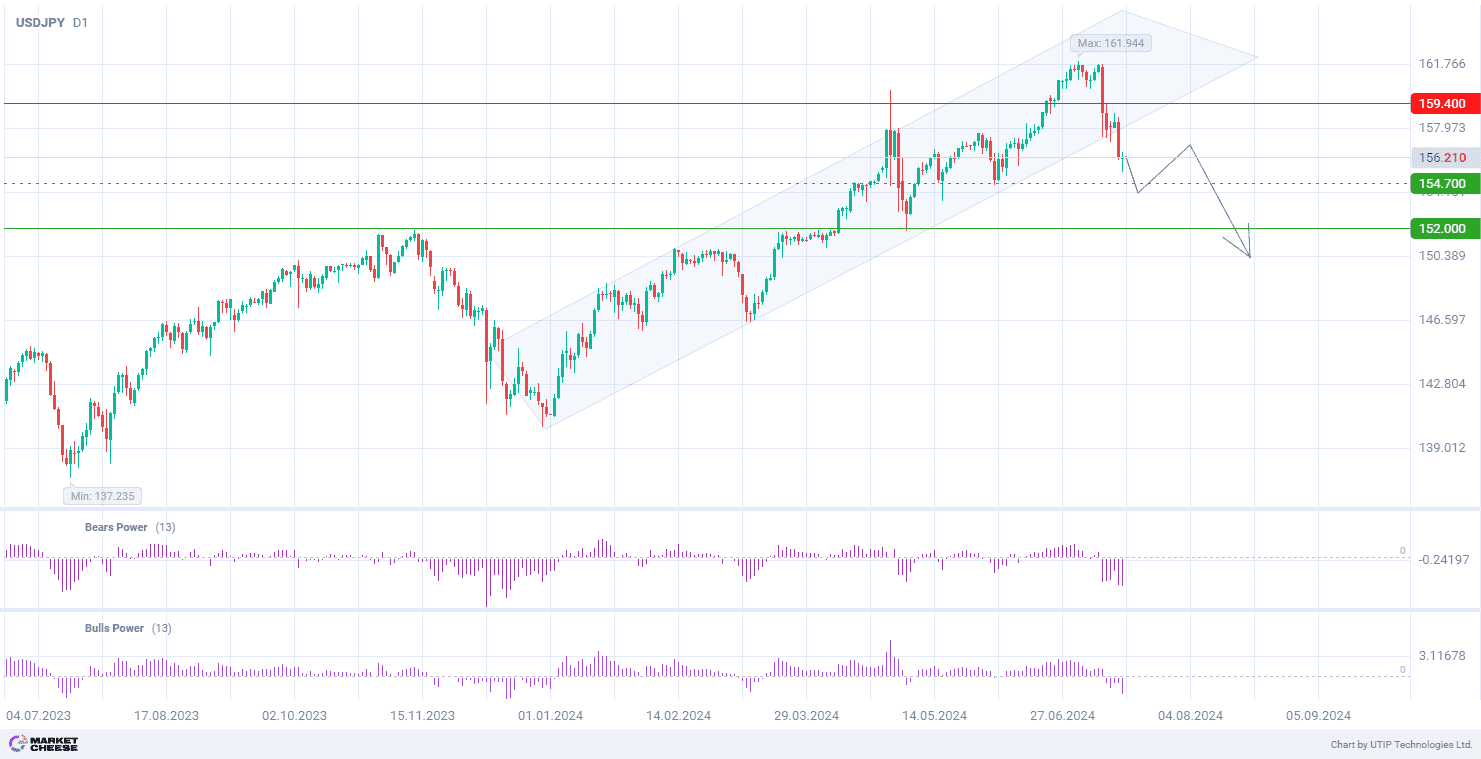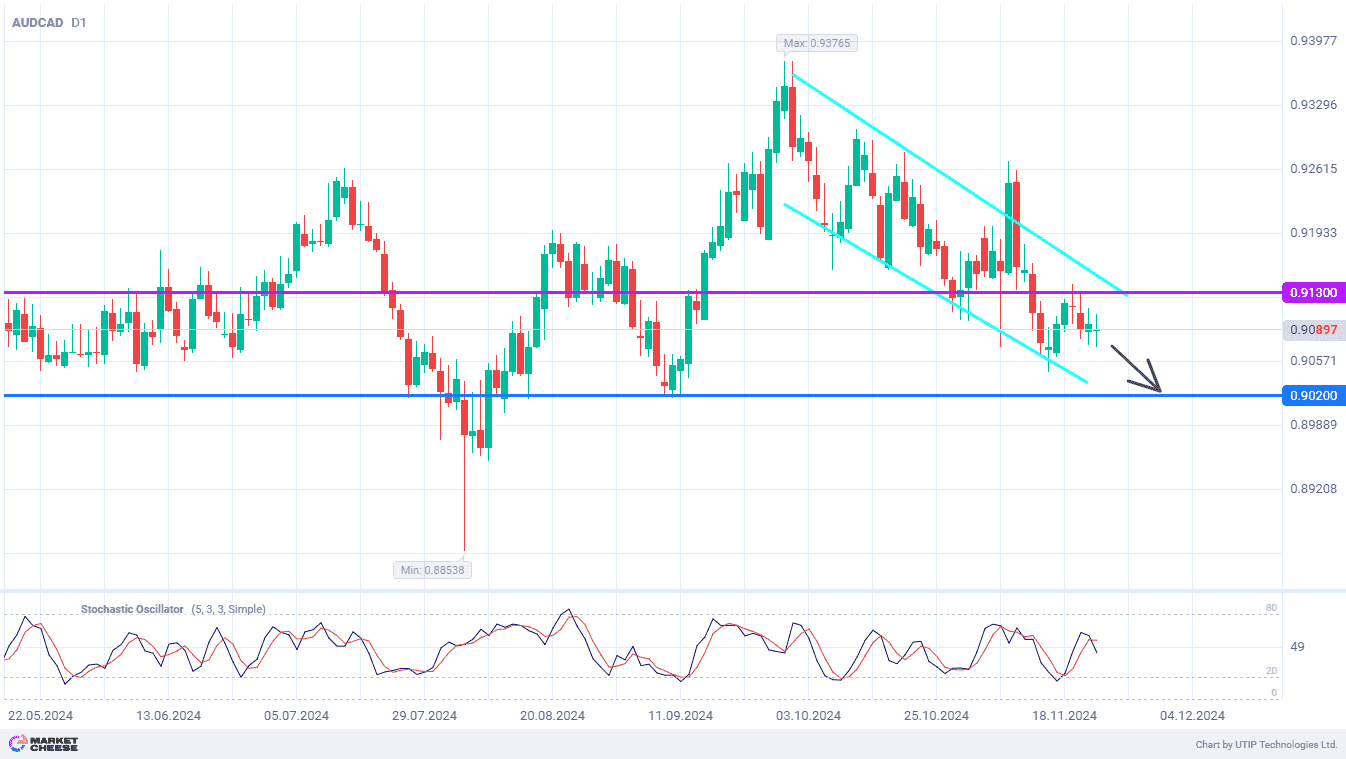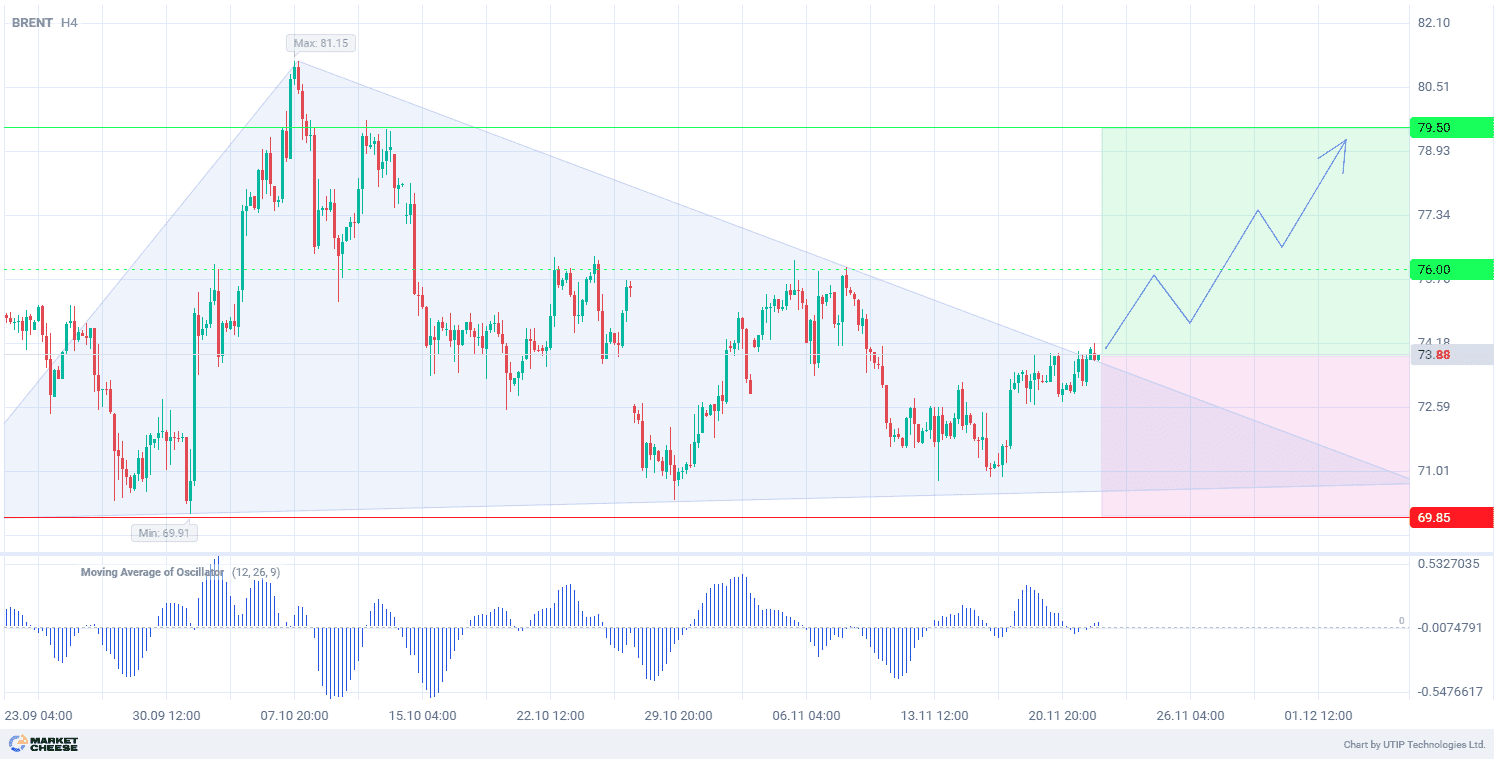The USDJPY currency pair is moderately declining on Thursday, dropping below the 156.00 level for the first time since June. The reason for the latest drop was the alleged intervention of Japan last week, which contributed to the growth of the yen. At the same time, the dollar has suffered significant losses as markets prepare for U.S. interest rate cuts in the coming months.
Fed spokesman Christopher Waller and his New York-based counterpart John Williams noted Wednesday that central bank policy could become softer.
Bank of Japan money-market data suggested authorities may have bought nearly 6 trillion yen ($38.37 billion) last week. Net short yen positions hit a 17-year high at the time. This week’s moves bore the hallmarks of further intervention.
Interest rate markets are pricing more than 60 basis points of U.S. interest rate cuts this year and some 20 basis points of hikes in Japan. This narrows the wide rates gap that had encouraged investors taking on large short positions in the Japanese currency.
So far the yen is the worst-performing G10 currency on the dollar, losing more than 9%, while the yuan is down about 2.2%.
From the technical point of view, USDJPY has gone out of the uptrend on the D1 timeframe. This trend has been in effect since the end of last year. The breakdown of the support indicates a change of sentiment among traders, suggesting a possible strengthening of the downtrend in the near term. Bulls Power and Bears Power (standard values) are in the negative zone, indicating a potential decline in the pair.
Signal:
The short-term outlook for the USDJPY currency pair is to sell.
The target is at the level of 152.00.
Part of the profit should be fixed near the level of 154.70.
The Stop loss could be placed at the level of 159.40.
The bearish trend is of a short-term nature, so it is suggested to limit the trading volume to no more than 2% of your capital.










